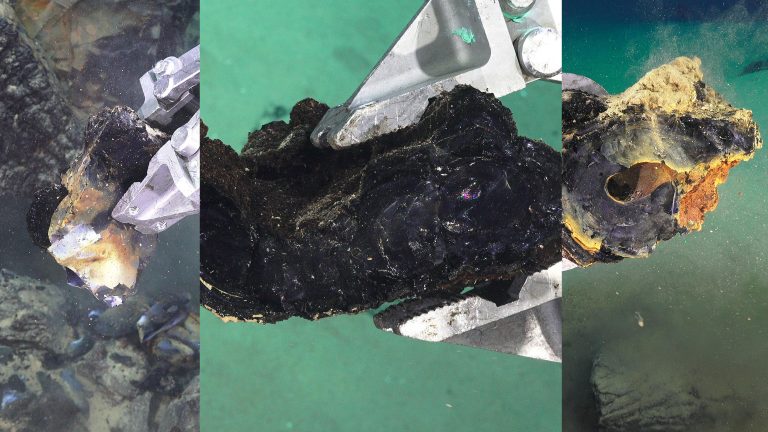Without a doubt, geology fieldwork takes a lot of patience and imagination. Geologists must be able to look at a fragment of rock and piece together a jigsaw puzzle of earth history that can be millions of years old. The term “geological time” had to be coined to explain the huge time scales in which these expert minds operate. Dr. Ken Rubin, Chief Scientist, does not consider himself imaginative, so he seeks out witnessing what he refers to as “active geological processes,” which are better preserved in the rock record, although some of occurred over two hundred years ago.
Geologists thrive on mysteries. Finding unexplainable phenomena on a regular basis would likely frustrate most of us, but not the experts onboard R/V Falkor. After the spectacular dives over North Mata volcanoes – which were crowded with huge black smokers, diverse biological communities, and endless colors – the exploration of a lava field twenty kilometers southwest of West Mata Volcano could seem bland. Yet the intense detective work necessary to make sense of the area’s seafloor structures is undeniably fascinating to the resident scientists. One mystery in the area has intrigued Ken Rubin and NOAA PMEL colleague Bob Embley since being discovered in 2008: the occurrence of extensive, long dacite lava flows in the NE Lau Basin. ROV SuBastian’s Dive S92 was designed to investigate some specific questions about the eruption of one of these large dacite lava flows.
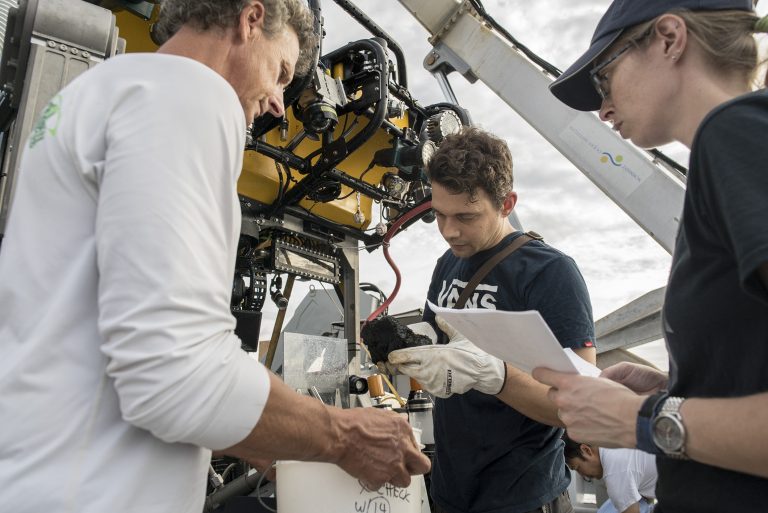
Dacite
Not all magma is created equal. Dacite is a term that refers to the composition of a certain kind of magma, and the rocks that result once the lava cools down and solidifies. Through camera images and backscatter data collected years ago, the scientists found there were huge lava flows on the seafloor in this area of dacite composition. And yet the flows did not seem to be associated with any volcano, so there were several puzzling aspects to be explored before this dive.
One of mysteries Dive 92 sought to answer was determining what the huge size of the flows can tell researchers about the behavior of the lava itself on the deep seafloor. Dacite lava on land is viscous, which means it creates short flows and tends to grow lava domes. However, here in the NE Lau Basin, the dacite flows have fluid morphology and are more than 10 kilometers long, covering huge areas on the seafloor. “The flow we dove on is the largest known dacite lava flow on the planet,” explains Dr. Rubin. He nevertheless remains cautious: so little is known about so much of the oceans, there could very well be larger outpourings in existence, they just haven’t been found. Yet.
“It was an amazing dive because the flow appears to have been really fluid lava of low viscosity. We were seeing all the ripples and waves of the flow top, like frozen turbulence. It means the lava was racing across the seabed for most of the eruption, but dacite is supposed to be slow and sticky. Observing extensive amounts of that sheet flow, that is a really interesting part of the story,” says Dr. Rubin.
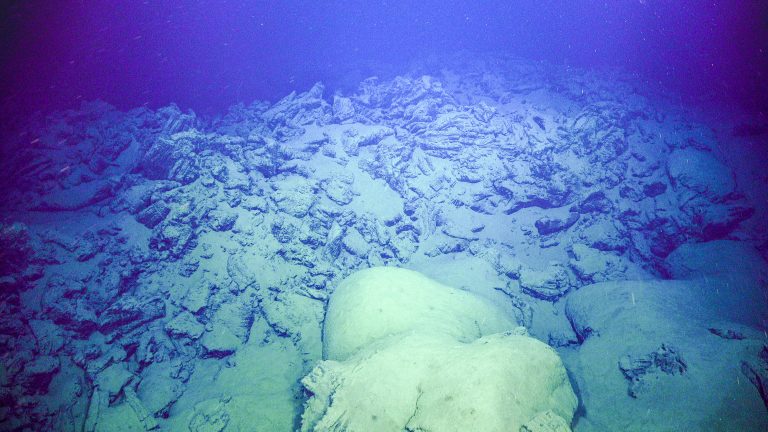
There are not many ways in which dacite lava can become more fluid. The first one is temperature. Just like honey, the hotter the lava, the more fluid it will behave. Another is that a high water content dissolved in the magma (as these dacite flows have) can make them behave more fluidly. “Something needs to hold that extra water in, which in this case is the overlying 2500m of sea water,” clarifies Dr. Rubin. The amount of crystals in a magma can also strong affect their fluidity. The more crystals, the more viscous it will behave. Sure enough, the dacite lava flows found here have a very low crystal content.
This story does not end there: ”Another mystery in this lava flow field is the juxtaposition of rapid eruption rate lava forms with slowly inflating pillow lavas, including towering tumulus structures near the shallowest portion of the lava flow. These form from slow and continual injection of magma at the base of an inflating and cracking portion of the flow, apparently after an earlier eruption phase favoring this/fast lava flows,” explains Dr. Rubin.
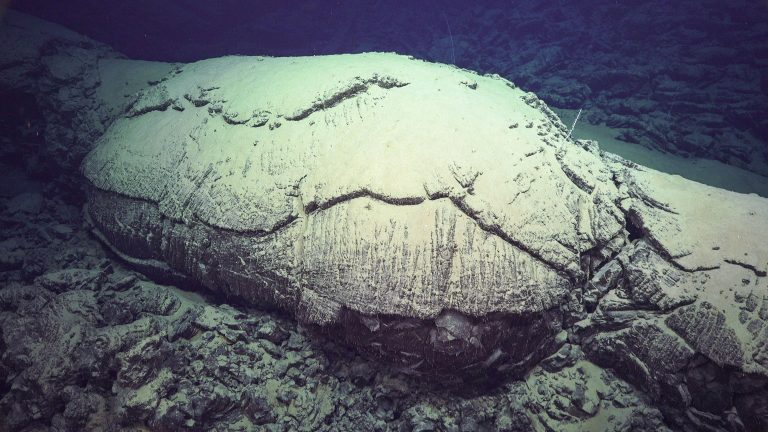
The Melting Pot
The actual source of some of these huge lava fields is another interesting issue. “The other odd thing is that not only do you need runny magma to make a long lava flow, you also need a continuous supply of it. This makes the site really curious because the flow is not associated with an obvious volcano, so where was all the magma that erupted produced and stored before the eruption?” asks Dr. Rubin.
Calculations by Rubin suggest that the dacite here in the NE Lau Basin is derived from boninite, which is found in the Mata volcanoes further to the northeast, however the two provinces in which dacite and boninite are erupted are physically separated from one another. Unlike the boninite volcanoes around the area that pile up, creating large volcanic cones, the dacite flows are much thinner and much larger in area. “In order to get dacite, it needs to cook under pressure for long periods of time in a magma chamber. The amount of dacite lava here is enormous, but where is the magma chamber?” reflects Dr. Bill Chadwick, Marine Geologist. For some of the dacite lava flows erupted 20 km south of the dive 92 site, there is a well defined volcano: Niuatahi. Yet for many of the huge dacite lava outpourings in the region, the question remains – where is the source?
Boom
Another new observation made by experts posits that the events creating this huge dacite lava flow likely included an explosive phase of the eruption. The force needed to explode under the pressure of more than two kilometers of water is massive.
Several samples containing pumice and welded ash were collected during the dive. If the “bubbly” rocks turn out to have the same composition as the dacite, that would suggest the eruptions were initially explosive. We know this from eruptions observed on land. “Just because you see a hill that looks like sediment, it doesn’t mean that it is all sediment. Right on the surface there’s a veneer of sediments, but underneath we found rounded pieces of pumice, volcanic glass, and sub-rounded dense volcanic rock. On land when you have an eruption, material flies up in the air and then falls back down nearby, creating pyroclastic deposits. We don’t know how a pyroclastic fall deposit would look underwater, but I think this might be one,” explains Dr. Rubin.
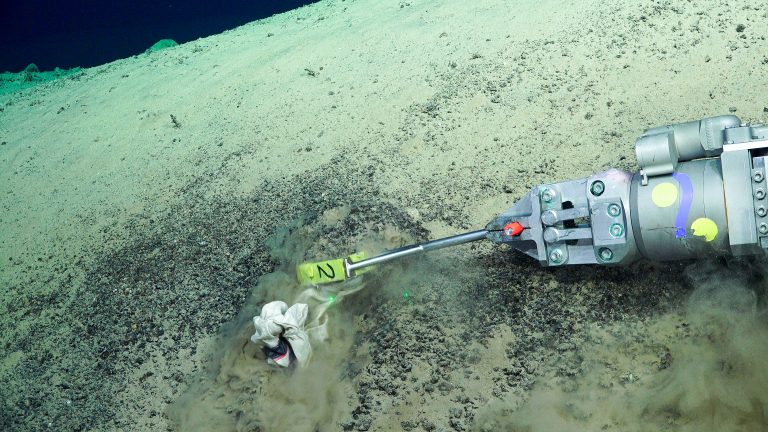
Many aspects of the huge dacite lava flows are extraordinary, including their large size, huge volume, association with explosive activity, and also their unusual fluidity. The rocks themselves are also visually stunning with centimeters-thick rinds of obsidian-like glass. The findings are part of the detective work to solve these mysteries; the geological storytelling that will unfold from this study is sure to be enthralling.
